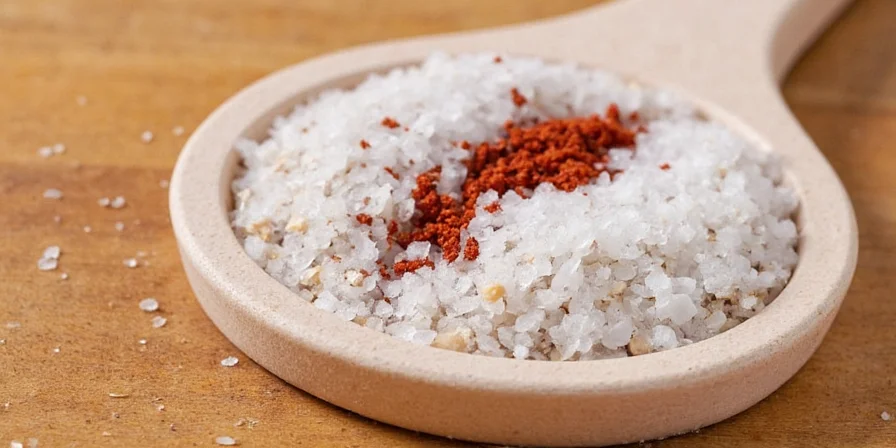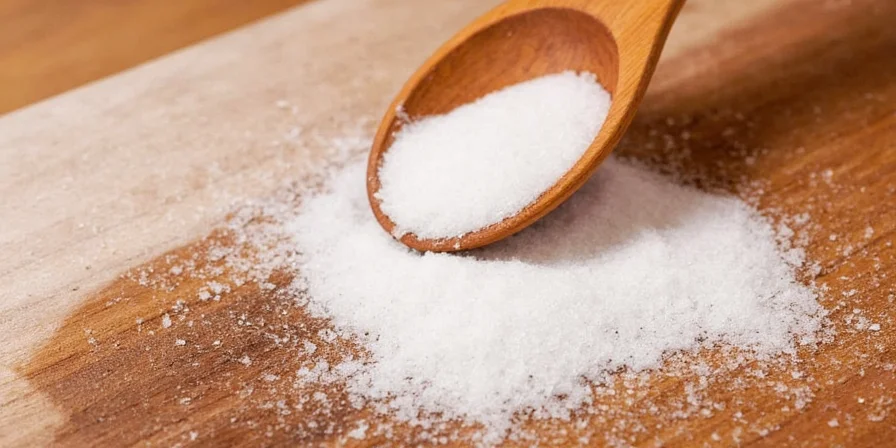Salt seasoning refers to the strategic use of various salt types to enhance and balance flavors in cooking—not just to add saltiness. Unlike regular table salt used for basic salting, salt seasoning involves selecting specific salts based on their texture, mineral content, and dissolution properties to achieve precise culinary results. Professional chefs use salt seasoning at different cooking stages to amplify sweetness, reduce bitterness, and unlock umami in ingredients. This guide explains exactly how salt seasoning works, when to apply it, and which salt types deliver the best results for specific dishes.
What Is Salt Seasoning and Why It Matters
Salt seasoning is the culinary practice of using different salt varieties at strategic points in the cooking process to maximize flavor development. Key differences from regular salt use:
- Timing – Adding salt during cooking (not just at the end) changes food chemistry
- Selection – Different salts serve distinct purposes (e.g., kosher for cooking, sea salt for finishing)
- Technique – Proper salt seasoning requires understanding how salt interacts with proteins, vegetables, and starches

How Salt Seasoning Actually Works: The Science
Salt seasoning transforms food through three key mechanisms:
- Flavor enhancement – Sodium ions suppress bitterness while amplifying sweetness and umami (e.g., salt makes tomatoes taste sweeter)
- Protein alteration – Salt breaks down muscle fibers in meats, improving texture and moisture retention
- Osmosis control – Drawing out excess moisture from vegetables before sautéing prevents steaming
For optimal results, add 1% salt by weight to cooking water (tasting like seawater) and season meats 45 minutes before cooking to allow penetration. This scientific approach separates professional results from amateur attempts.

Salt Seasoning Techniques: When and How to Apply
Most home cooks make these critical mistakes:
- Only adding salt at the end of cooking
- Using the same salt type for all purposes
- Not adjusting for salt density differences between varieties
Professional salt seasoning protocol:
- During prep – Sprinkle proteins 30-45 minutes before cooking to enhance texture
- While cooking – Add kosher salt to liquids and dishes requiring dissolution
- At finish – Apply flaky sea salt for crunch and aroma bursts
Salt Types Compared: Which to Use When
Not all salts work equally for seasoning. Here's how to choose:
| Type of Salt | Best For Seasoning | Avoid Using For | Substitution Ratio |
|---|---|---|---|
| Kosher Salt (Diamond Crystal) | Meat preparation, boiling water, general cooking | Finishing dishes | 1:1 for seasoning |
| Sea Salt (Maldon) | Finishing meats, vegetables, chocolate | Dissolving in liquids | ½ tsp sea salt = 1 tsp kosher |
| Table Salt | Baking, brines, precise measurements | Direct seasoning | ¾ tsp table salt = 1 tsp kosher |
| Himalayan Pink Salt | Specialty dishes, salt blocks | Everyday seasoning | Same as sea salt |

Common Salt Seasoning Mistakes and Fixes
Mistake: Adding salt only at the end
Solution: Season in layers—during prep, cooking, and finishing for balanced flavor
Mistake: Using iodized table salt for seasoning
Solution: Reserve table salt for baking; use kosher for cooking and sea salt for finishing
Mistake: Not adjusting for salt crystal size
Solution: Remember that 1 tsp kosher salt = ¾ tsp table salt = ½ tsp sea salt flakes
Salt Seasoning FAQ: Quick Answers
What's the difference between salt seasoning and regular salt?
Salt seasoning refers to using specific salt types at strategic cooking stages to enhance flavors, while regular salt typically means basic table salt added at the end. Proper salt seasoning involves understanding how different salts affect food chemistry throughout the cooking process.
When should I add salt when cooking?
Add salt in three stages: 1) 30-45 minutes before cooking proteins, 2) during cooking for liquids and dishes requiring dissolution, 3) at the end for finishing with flaky salts. For pasta water, add salt when water reaches a rolling boil (1% by weight).
Can I use sea salt for cooking instead of seasoning?
Yes, but it's inefficient. Sea salt's large crystals don't dissolve well in cooking liquids. Reserve premium sea salts for finishing dishes where their texture and flavor burst matter. Use kosher salt for actual cooking and seasoning processes.
Why does salt make sweet things taste sweeter?
Salt suppresses bitterness receptors on your tongue while enhancing sweet perception through sodium ions interacting with taste receptors. This is why a pinch of salt improves chocolate, caramel, and fruit dishes without making them taste salty.
Professional Salt Seasoning Checklist
Follow these steps for restaurant-quality results:
- Measure salt by weight, not volume (1% solution for cooking water)
- Season proteins 30-45 minutes before cooking
- Use kosher salt for cooking processes requiring dissolution
- Reserve flaky sea salts for finishing touches
- Taste and adjust at each cooking stage
- Store salts properly to prevent moisture absorption

Final Salt Seasoning Tips
Mastering salt seasoning requires understanding both the science and technique. Remember these key principles: salt early for proteins, use the right salt type for each purpose, and season in layers rather than all at once. The difference between properly seasoned dishes and under-seasoned food isn't just saltiness—it's complete flavor development where ingredients taste like their best versions. Start implementing these techniques today to transform your everyday cooking with professional-level results.











 浙公网安备
33010002000092号
浙公网安备
33010002000092号 浙B2-20120091-4
浙B2-20120091-4